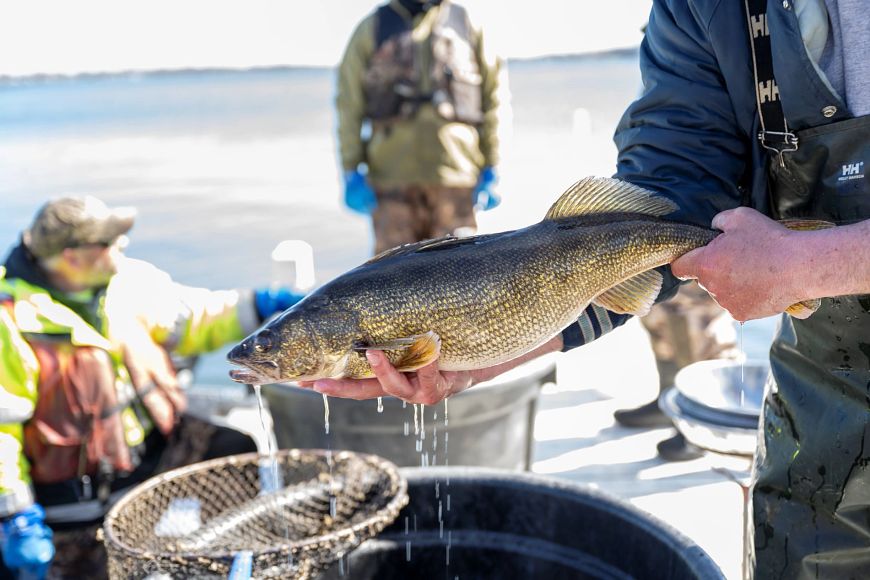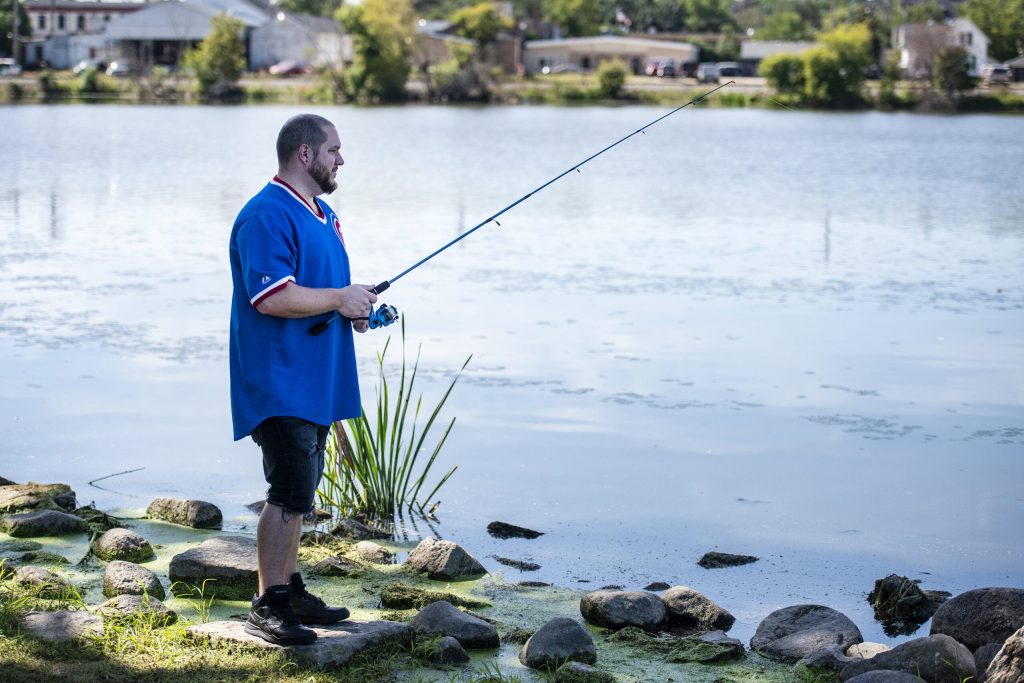Fishing, Not Warming, Is Leading Driver of Midwest Fish Populations
Study led by UW-Madison found fishing had a greater effect on most studied locations.

Fishing had a greater impact on most fish populations studied in Wisconsin and Minnesota. Researchers analyzed eight fish species, including walleye. Photo courtesy of the Wisconsin DNR
Despite worries over rising temperatures, it turns out anglers have a greater effect on fish populations than global warming. That’s according to a new study led by the University of Wisconsin-Madison.
A team of state, federal and university researchers published the study earlier this month in the peer-reviewed journal Science Advances. The study examined data collected by tribal and state agencies on population trends over the past four decades for 521 fish populations in nearly 200 lakes across the Midwest.
“We found that for the majority of the populations so far fishing has far more greater impact than warming on the fish populations,” said Luoliang Xu, postdoctoral researcher at UW-Madison’s Center for Limnology.
Xu said fishing had a greater effect on 92 percent of fish populations than warming across lakes studied between 1980 to 2021. The findings surprised researchers since 98 percent of populations studied were in lakes seeing increasingly warmer waters.
The results inspire hope for Olaf Jensen, study co-author and professor at UW-Madison. He said the findings indicate it’s not too late for most fish populations. Only cisco, or tullibee, experienced very negative effects from warming among species studied.
“For the rest of the species here, including cool-water species like walleye, it really is fishing that’s the dominant driver,” Jensen said. “That means that if we have concerns about population declines, we’re likely to be able to solve them, at least in the short-term, by limiting harvest from fishing.”

Burlington resident Benjamin Ness fishes near the Echo Lake Dam on Thursday, Sept. 1, 2022, in Burlington, Wis. Angela Major/WPR
Sport fishing is big business in Wisconsin, generating more than $2 billion each year in economic activity.
The study revealed that 65 percent of warm-water fish saw greater populations with warming. Populations declined for slightly more than half of species studied that thrive in cool or cold waters. Only 1 percent of fish populations were more negatively affected by warming than fishing.
“The best approach is to tailor these regulations so that they meet local goals,” Jensen said. “In some places we might want to allow more harvest. In other places, we might be trying to rebuild a previously overfished population, and that’s something that management agencies are already doing.”
Xu noted the study found variable effects of warming on cool-water species like walleye, which is generally believed to see negative effects from climate change.
“But from our study, we do find that in some areas, the warming actually has a positive impact on these cool-water species,” Xu said.
The findings indicate that environmental or ecological factors in specific lakes may play an important role on fish populations. Jensen added some lakes have cold springs where fish can escape warmer water during the heat of the summer.
Even so, researchers highlight their findings are based on historical warming trends, warning that populations may reach a tipping point in the future.
“As the climate continues to warm, even some of the populations of fish that have been winners so far are likely to show negative impacts of future warming,” Jensen said.
“Even under climate change, the local actions still matter,” Xu said. “Managing fishing pressure effectively is probably one of the best tools we have in hand to keep our lakes, and fish we depend on, resilient in a warming world.”
Fishing plays greater role on Midwest fish populations than warming, study finds was originally published by Wisconsin Public Radio.
If you think stories like this are important, become a member of Urban Milwaukee and help support real, independent journalism. Plus you get some cool added benefits.




















